Related Research Articles

The Bloch MB.160 was a fourteen-seat French airliner intended for use in the French African colonies. Three were built and two entered service with Régie Air-Afrique at the start of World War II. Developments included the Bloch MB.162 bomber which was too late for service and the Sud-Est SE.161 Languedoc, one hundred of which were built post-war.
The Lemberger LD20b was a single-engine cantilever biplane designed to be easily towable behind a car. Built in Germany in 1971, it made several flights but did not enter production.

The Timm T-840 was a twin engine, high wing passenger aircraft designed and flown in the United States in 1938. Equipped with a tricycle undercarriage and low speed aerodynamic devices, it could be configured to carry between six and ten passengers. Only one was built.

The SAIMAN LB.2 was an unconventional Italian two seat cabin side by side sport aircraft designed around 1937, with a single pusher configuration engine, twin tail booms and an early tricycle undercarriage.
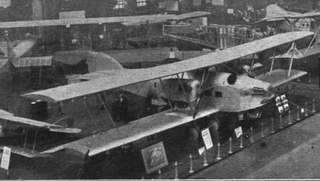
The Potez XVIII was a French airliner from the early 1920s, a three-engine biplane carrying up to twelve passengers.
The Caudron C.580 was a French advanced trainer aircraft intended to prepare pilots for the new low wing monoplane fighters of the mid-1930s. It did not go into production and only two were built.
The Caudron C.570 was a French twin-engine aircraft designed and built by Caudron in the mid-1930s. It was designed to function in multiple roles; as a bomber, passenger transport, paratroop aircraft, cargo aircraft and air ambulance.
The SEA.1 was a Belgian, multi-purpose, light twin engine monoplane flown in 1936. Only one was built; it was later converted into a single engine aircraft and used by the military.
The Lambert Twin Monocoach was a light, twin-engined U.S. aircraft, designed to carry three or four passengers. Initially it was fitted with economical, low-powered engines but even given a large increase of power it failed to attract customers.
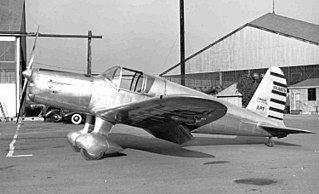
The Aeroneer 1-B is an all-metal light aircraft built in the United States in 1936. It did not reach production, despite an attempt to interest the USAAC in it as a trainer, but it appeared in three Hollywood films.
The Caudron C.860 was a single engine, single seat monoplane ordered by the French government as a long distance communications aircraft. First flown in 1938, it was also expected to set speed and altitude records but the outbreak of World War II ended developments.

The parasol wing, single engine Udet U 8, sometimes referred to as the Limousine, was a three-seat commercial passenger transport designed and built in Germany in 1924. Five were produced and were used by German airlines until about 1928.

The SABCA Demonty-Poncelet monoplane, Demonty-Poncelet limousine or SABCA-DP was a Belgian light aircraft first flown in 1924. It had two comfortable side-by side seats in a glazed cabin. Though it had competition successes in 1924 and 1925, it did not go into production.

The G.A.C. 102 Aristocrat or General 102 Aristocrat is a single-engined cabin monoplane built in the US just before the Great Depression. It proved popular, with over forty built; an early example was taken on an aerial survey of Antarctica. One survives.
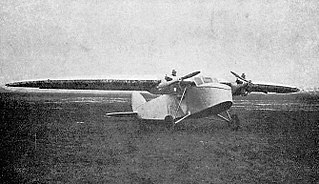
The Albert A-20 was a French twin-engined monoplane designed for postal work in 1929. Only one was built.

The McMullen Mac Airliner was a late 1920s American light airliner powered by a Liberty L-12 V-12 engine of World War I origin. The sole prototype was destroyed in a hangar fire.

The Ogden Osprey was a three engine, high wing monoplane airliner which seated six. Designed in the United States and first flown in the spring of 1930 or earlier, six were built and some used commercially before Ogden Aeronautical ceased trading in the Great Depression.
The Nicholson Junior KN-2 was a low power, high wing, two seat, cabin monoplane intended for sport or flight training in the United States in the late 1920s. Only one was built.
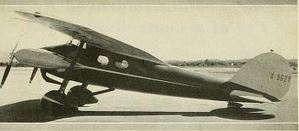
The Alcor Duo-4 was a high wing cabin aircraft, unusually powered by a pair of four cylinder straight engines mounted horizontally either side of the nose. After an accident it was rebuilt with six cylinder engines, becoming the Alcor Duo-6. The name Alcor derived from Allan Lockheed Corporation.
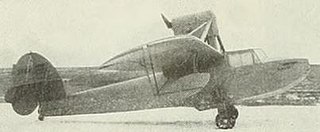
The Argonaut Pirate was a 1930s, U.S., three place, single-engined pusher configuration amphibious aircraft. Only two were built.